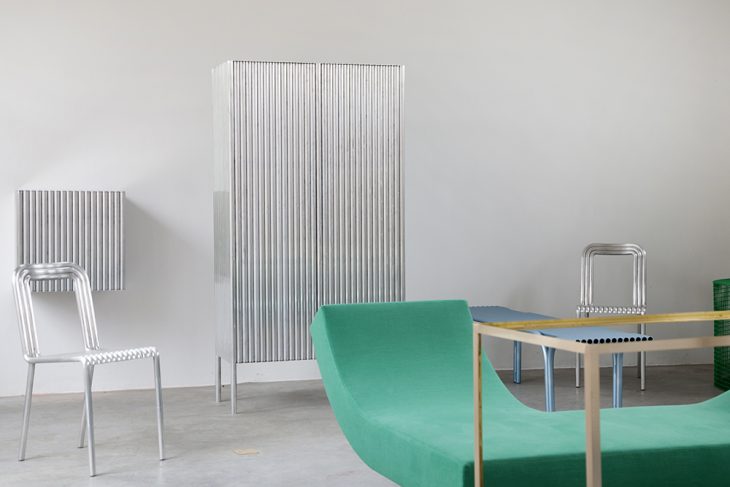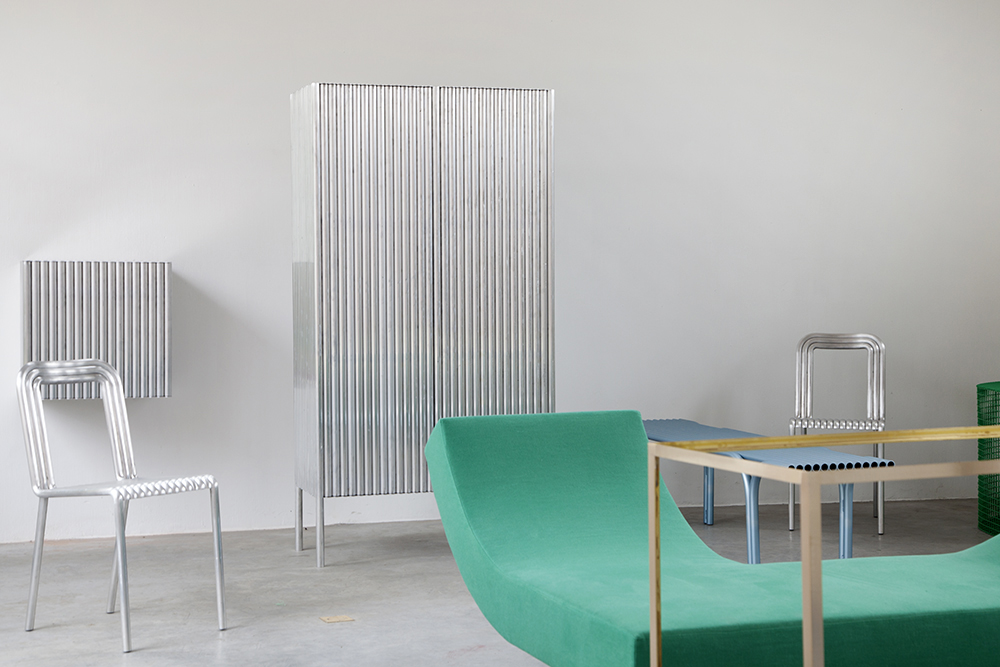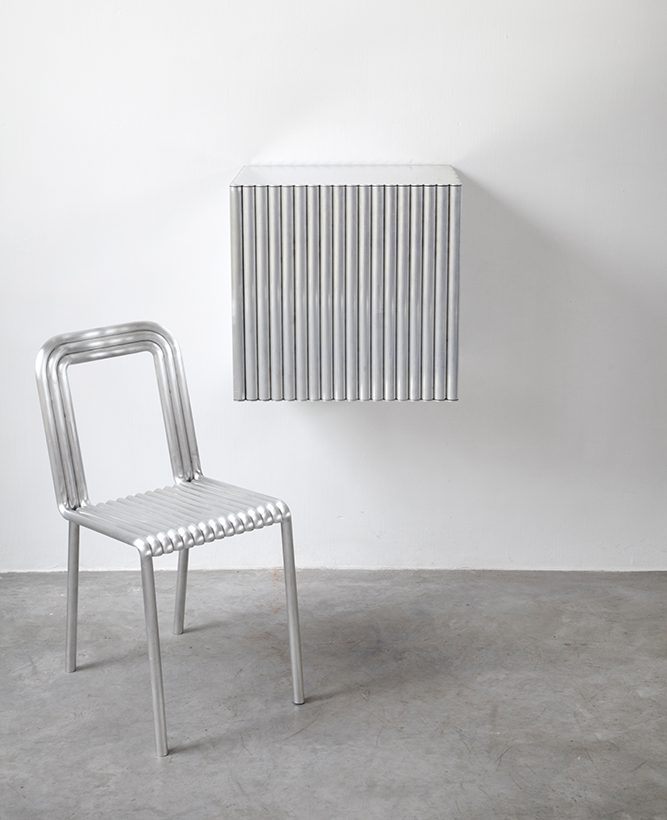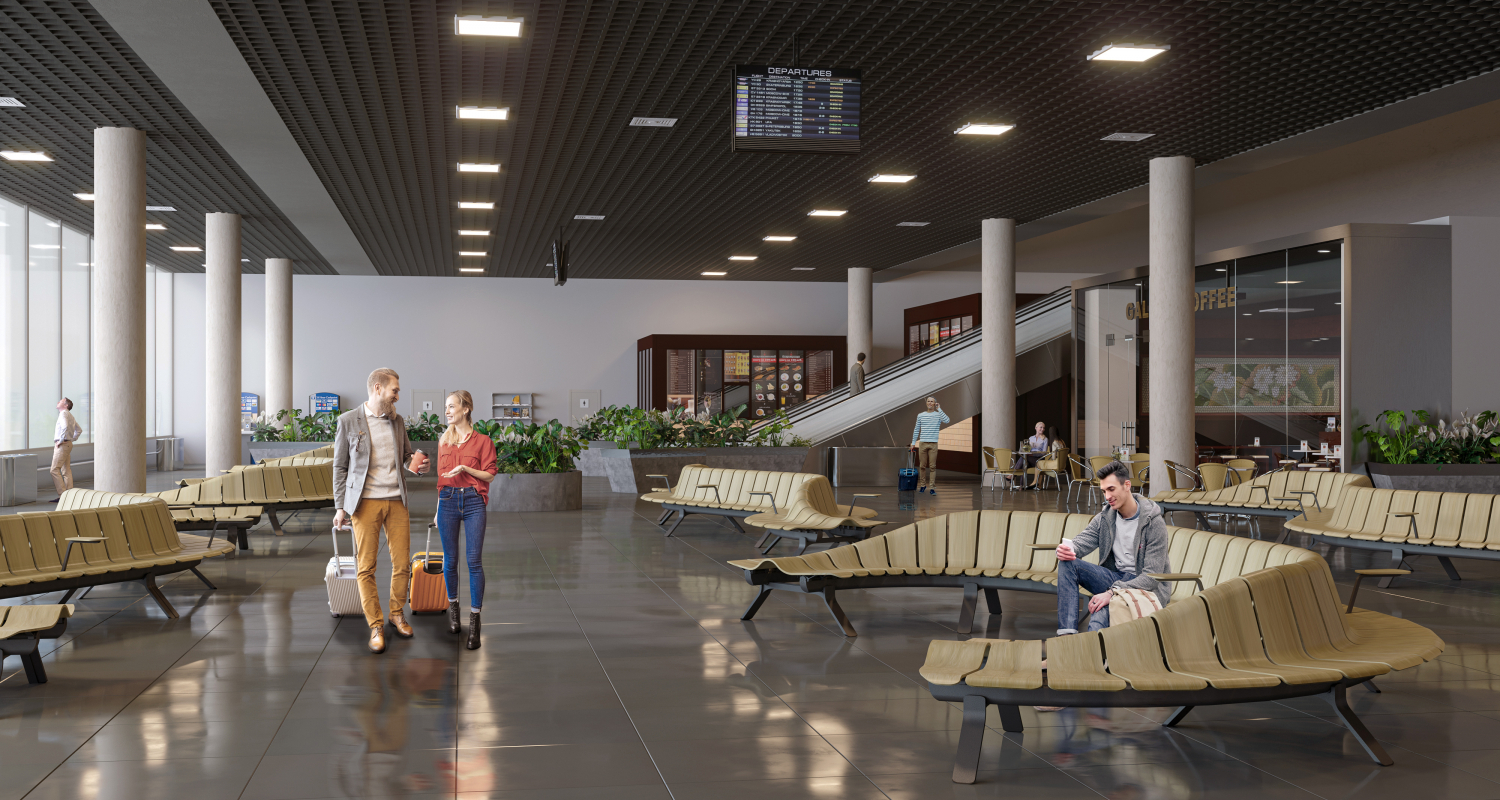By Rose Eaton, Light Metal Age
Aluminum has many valuable qualities. It is strong, lightweight, and can be used to create aesthetically pleasing products. The metal as a material for furniture design has a decades long history, and in recent years it has been utilized both for its visual appeal and for its sustainability.
History of Aluminum in Furniture
In 1924 after a successful venture into aluminum cookware, Alcoa looked towards furniture as a new potential for the widespread use of aluminum in America. As the only American aluminum producer, the company wanted to demonstrate the material’s versatility to broaden the range of objects made from the metal.
At the time, the common perception of aluminum furniture was that it was appropriate only for offices, factories, and hospitals. However, the 1920s marked a period of major transition in European interior design with a mindset that rejected historical ideas and embraced new materials. Americans were slow to accept this change, so Alcoa used traditional designs that would appeal to the nostalgia that Americans were not ready to let go of.
Alcoa’s first major project with aluminum furniture was a commissioned line of furnishings for the headquarters of the Mellon bank in Pittsburgh, Pennsylvania. The company manufactured 100 desks, 300 chairs, and an assortment of other items like wastebaskets, coat racks, and tables. All pieces were custom made, many featuring a wood-grain enameled finish and/or leather upholstery.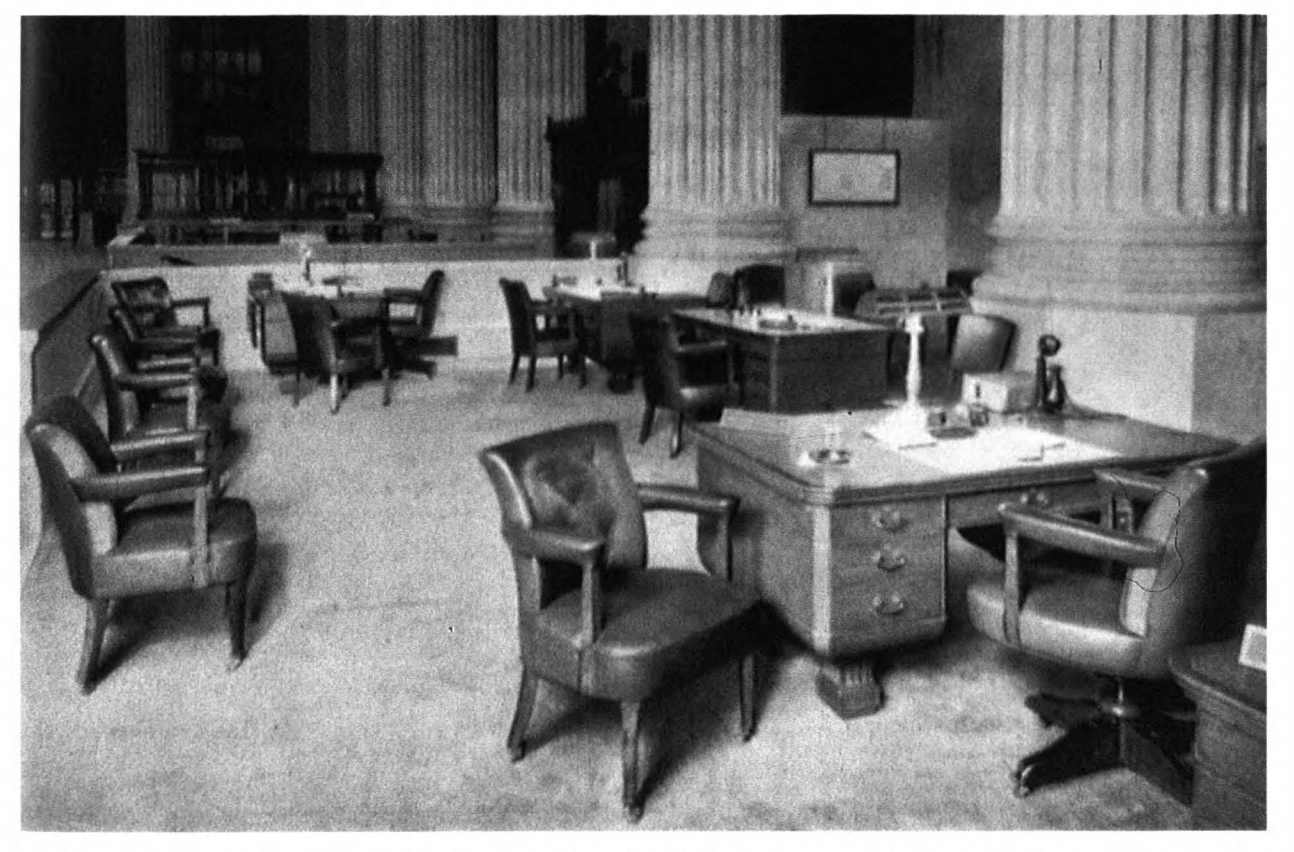
After the success of the bank installation Alcoa’s furniture subsidiary, the United States Aluminum Co., marketed its furniture to other corporations and institutions. Following this, aluminum furniture became increasingly popular.
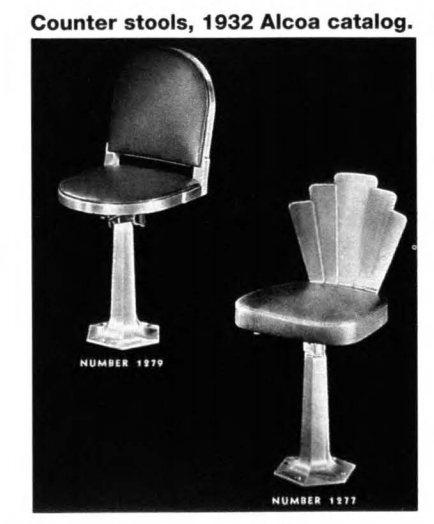 By the 1930s, notable architects were using aluminum in interior design and it was also prominent in corporations and bigger companies for its fireproof qualities.
By the 1930s, notable architects were using aluminum in interior design and it was also prominent in corporations and bigger companies for its fireproof qualities.
Despite the success of aluminum furniture for corporate use, it was not fully adopted into the typical American home at that time . Conversely, the metal’s use became common in non-residential interiors, such as offices and restaurants. It was, and continues to be a popular choice for outdoor furniture, revered for it’s light weight and resistance to rust and corrosion.
Today, interior design has become more than just a profession. Entire T.V. channels are dedicated to the art of interior decorating. Unique pieces are taking on the spotlight as the minimalist movement progresses into the mainstream. Pieces are chosen for their individuality, practicality, and sustainability. Aluminum fulfills the desire towards modernity and its historical underuse in home furnishings provides an opportunity for it to fulfill a niche aesthetic, driving the material forward into the future of furniture.
New Designs Provide a Simplistic Charm
Alltubes, a new collection of furniture hailing from Belgium, explores the use of aluminum tubing in different furniture pieces. Named for the aluminum tubes that comprise the pieces, the Alltube collection uses lightweight metal pipes, welded together in simple rows to create the surfaces for its chairs, benches, cabinets, and wall-mounted items.
The collection is a result of a marriage of ideas from designers Fien Muller and Hannes Van Severen, who developed a way to make standardized pieces of tubing both practical and decorative. They create walls and surfaces by welding aluminum tubes together in rows. Bended sections of tubing form the legs and rails that flow from the body of each piece of furniture.
On a visit to a metal manufacturer, the design duo saw a series of aluminum tubes lined up next to each other. “We were immediately surprised by the beautiful wavy surface and how the light reacted to it,” said Muller and Van Severen. “One element becomes a strong surface by multiplying it, hinges and doorways can be hidden in the tubes, and by extending or bending, legs or railings are created. Everything can flow naturally into each other in this way. We only had to work with one profile and yet we could create a whole world with it.”
Their collection of furniture consists of benches, chairs, and cabinets that are made from different diameters of aluminum tubing.
The seats of the chairs are made from 15 pieces of tubing. Two of the tubes bend down at the front of the chair to create legs. The back is formed of three pieces of tubing — two that rise up from the seat and one that extends downwards, forming the back legs. The tubes are 2.5 cm, which is a smaller diameter of tubing than other pieces in the collection. “We found that this proportion fits better,” said the designers.
The benches are 175 cm long and feature a blue finish. Eleven lengths of 5 cm diameter tubing were used for the main body, with an additional three pieces on each side that are bent to create the double-width legs.
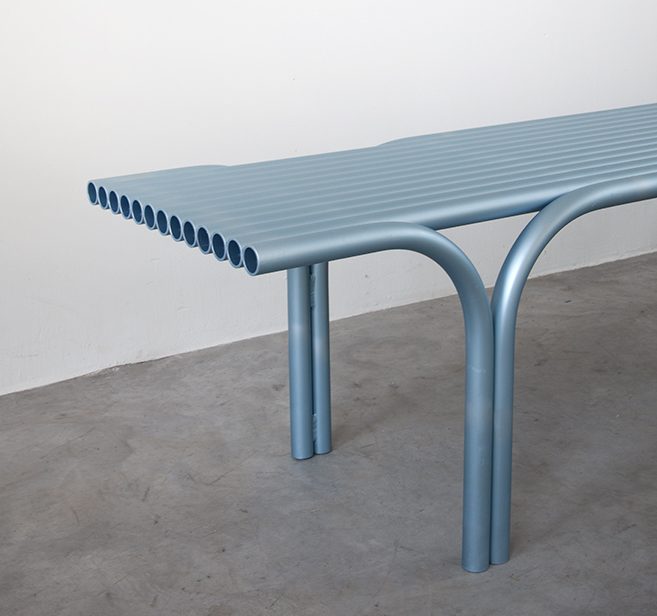
The cabinets feature flat tops, shelves and bottoms, each with a scalloped edge that matches the contour of the tubes that form the walls of the designs. Two of the cabinets are the same size, but use different diameters of tubing (5 cm and 3 cm) to create a different effect.
 “In the case of the cabinets, the repetitive rhythm of the pipes placed next to each other, causing undulations, makes you forget the coldness of the material,” said the duo. “In the bench and the chair, bending the material softens its hardness. The strength of the material itself is also expressed [in Alltubes]. The simplicity of the idea and then creating a whole world with it. Thinking as far as possible from one material. And going as far as possible.”
“In the case of the cabinets, the repetitive rhythm of the pipes placed next to each other, causing undulations, makes you forget the coldness of the material,” said the duo. “In the bench and the chair, bending the material softens its hardness. The strength of the material itself is also expressed [in Alltubes]. The simplicity of the idea and then creating a whole world with it. Thinking as far as possible from one material. And going as far as possible.”
Alltubes was launched at the Collectible design fair in Brussels, which took place from March 5-8, 2020.
Sustainable Angle
Green Furniture is a firm that designs furniture for airports and other public indoor spaces. The design company recently teamed up with Hydro for its latest project called the Ascent Series, which uses Hydro’s CIRCAL, a low-carbon product guaranteed to contain at least 75% recycled aluminum. CIRCAL is light, strong, and corrosion resistant, and like all aluminum can be infinitely recycled.
As the founder and designer of Green Furniture, Johan Berhin’s philosophy is that furniture should be built to last. “Green Furniture is a purpose-driven company,” he said. “We’re here to make a change in public interiors, but also to drive a sustainable transformation in the furniture industry.”
The Ascent series is being used in airport gate seating in Scandanavia, Australia, and North America. The aluminum support beam running under the seating elements of the series is not only strong and light, but extruded with internal channels, which hide wires to integrated power charging stations.
“Our goal was to develop a sustainable and light-weight seating, so we looked at using aluminum as part of the construction,” said Hanna Carlsson, creative designer at Green Furniture Concept. “Since we are interested in circular economy, we found Hydro and CIRCAL a perfect fit.”

